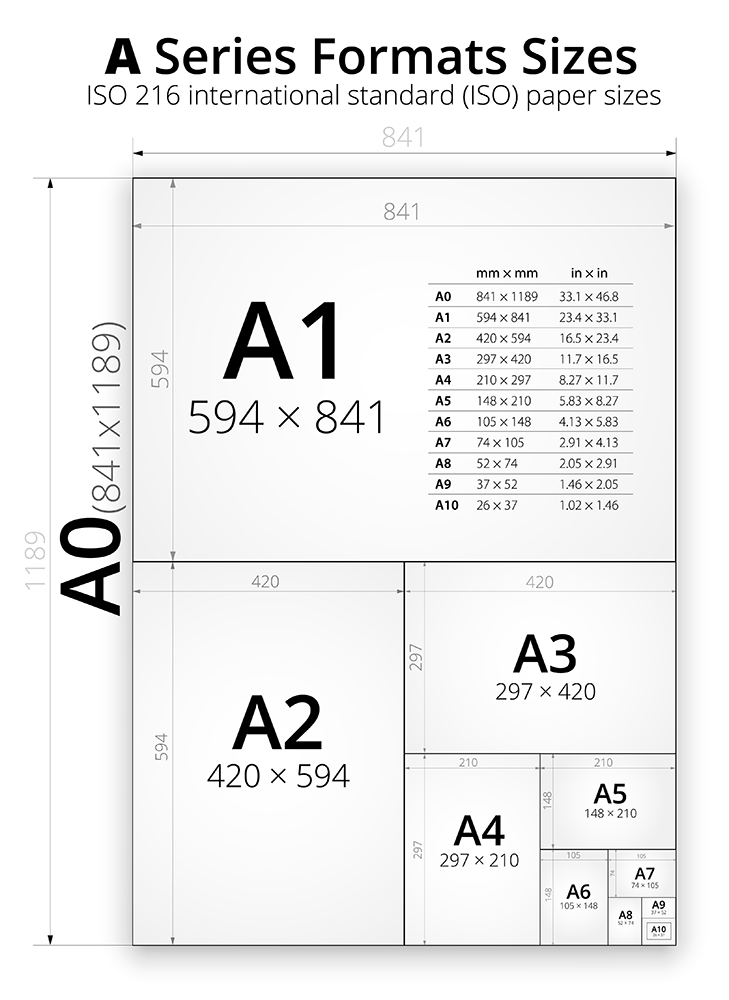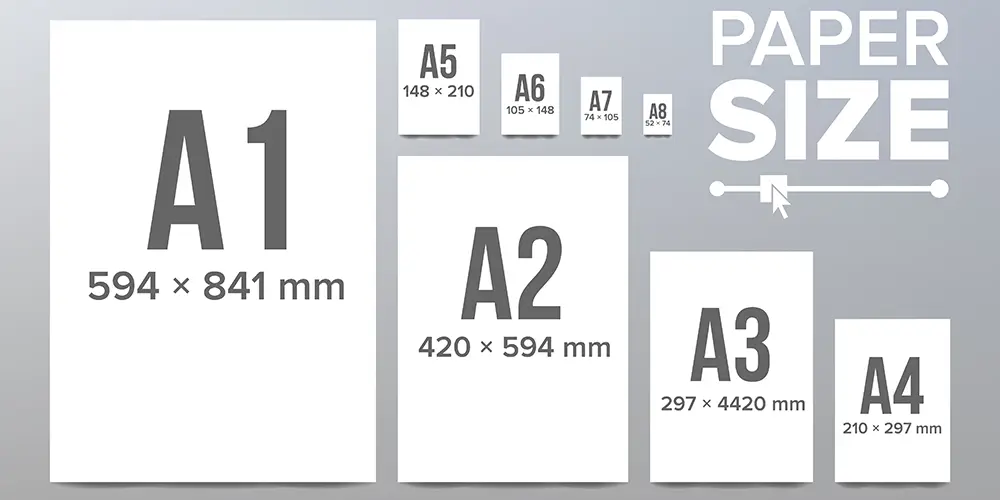Table of Contents
This is everything you need to know about A4 Paper before you place your order, all in one place.
Paper Dimensions
The A4 page is everywhere. From schools to offices, it’s the most common size worldwide for printing. This is because of the ISO 216 – the international standard for paper sizes.
You might be thinking: ‘What is the exact size of A4 paper, what other sizes and weights (thicknesses) of paper are there, and for what purpose are they used?’ This article will discuss the A4 paper size, the other A paper sizes, and the different paperweights.
The ISO 216 was put in place so that every size within it (the A size) has the same aspect ratio (2:1).
In other words, when you fold A0 paper in half, you get the A1 size. If you fold it in half again, you get an A2 size, and then the A3 size so on. This image gives a clear overview of the sizes of the A series (including all the size dimensions you need!):

Paper Weight
Now: the thickness (weight) of the paper.
Paper is measured in GSM (grams per square metre). The higher the GSM, the thicker the paper. Choose your GSM based on the feel and purpose of your print.
- 75 and 80 gsm paper: The most common paper for versatile use. Think of reading book papers and documents such as letters, return labels, invoices, work papers, contracts, etc.
- 90-110 gsm paper: High-quality letters and documents.
- 120-150 gsm paper: Colour children’s books, posters, magazines, leaflets, flyers and other commercial printed matter.
- 160-200 gsm paper: Posters, photos, leaflets, flyers and brochures.
- 220-250 gsm paper: Posters, photos, leaflets, flyers, brochures, invitations and certificates.
- 260-350 gsm paper: (Thin) book covers, business cards, birth announcements, congratulations cards and invitations.
Choose your GSM based on the feel and purpose of your print.
Paper Finishes
You may have noticed different papers look and feel different. The different paper finishes can change the functionality of a project. Here at Doxzoo, we offer the three following paper finishes:
Matt paper stock is similar to standard home or office paper. This is the most common finish for printing.
It is used for a wide range of documents, from forms and letters to essays, corporate stationery and more. It is easy to write on and does not reflect light.
Depending on your chosen product and spec, the following paper stocks may be available:
Matt (bond) – uncoated paper
Matt (ultra smooth) – coated paper
Suitable for: letters, forms, essays, corporate stationery etc.
Silk is a great all-rounder, with a finish half way between matt and gloss.
It is a popular choice for documents which include a mix of text and images.
Suitable for: paperback books, booklets, brochures, leaflets and posters etc.
Gloss is ideal for colour printing and is commonly used for magazines, brochures and flyers. It is a smooth, shiny and reflective paper finish. It’s great to make colours pop.
Due to the reflective nature of the paper, it can show fingerprints more easily than matt paper. Gloss paper is also difficult to write on and is not recommended for diaries, workbooks, forms etc.
Suitable for: magazines, brochures and flyers etc.
As always, if you have any questions, send us a message on Live Chat or email us at [email protected]!

Looking for a reliable printing company?
Get an instant quote